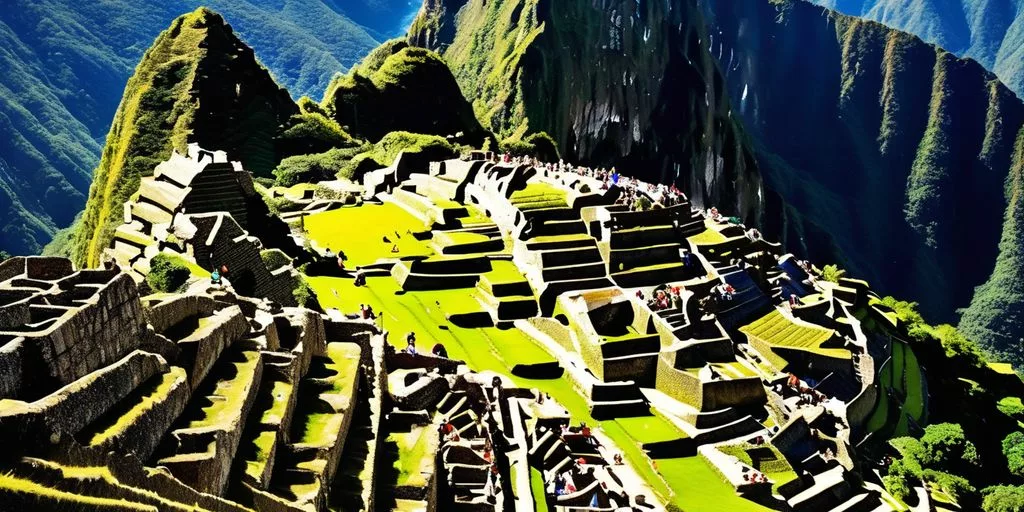
The Vibrant Festivals of South America
South America is a continent that knows how to celebrate! From the colorful parades to the rhythmic beats, the festivals here are a feast for the senses. Let’s dive into some of the most vibrant celebrations that showcase the rich cultural tapestry of this region.
Carnival in Brazil
Carnival in Brazil is arguably the most famous festival in South America. This event is a riot of color, music, and dance. Held every year before Lent, it features elaborate costumes, samba parades, and street parties that last for days. It’s a must-see for anyone looking to experience the true essence of Brazilian culture.
Inti Raymi in Peru
Inti Raymi, or the Festival of the Sun, is a traditional Incan celebration held in Peru. This festival marks the winter solstice and is a significant event showcasing Andean culture. With colorful parades and ritualistic performances, Inti Raymi offers a glimpse into the rich history and traditions of the Incan civilization.
Dia de los Muertos in Ecuador
Dia de los Muertos, or Day of the Dead, is celebrated in Ecuador with a unique blend of indigenous and Spanish traditions. This festival honors the deceased with altars, food offerings, and vibrant decorations. It’s a time for families to come together and remember their loved ones in a festive and meaningful way.
Traditional Music and Dance

Tango in Argentina
Tango is the heartbeat of Argentina. This passionate dance, born in the streets of Buenos Aires, is a mesmerizing blend of European, African, and indigenous influences. The music, often featuring the bandoneón, creates a dramatic and emotional atmosphere that captivates both dancers and audiences alike.
Samba in Brazil
Samba is the soul of Brazil. With its roots in African rhythms, this lively dance is synonymous with the famous Carnival in Rio de Janeiro. The infectious beats and vibrant movements of Samba bring people together, celebrating life with every step. It’s a dance that embodies joy and community spirit.
Cueca in Chile
Cueca is the national dance of Chile, a flirtatious and spirited dance that tells a story of courtship. Dancers wave handkerchiefs and move in a playful, yet elegant manner. The music, characterized by guitars and accordions, adds to the festive and cultural identity of this traditional dance.
Embrace the rhythm and movement of South America, where each dance tells a story and connects people through shared cultural heritage.
Indigenous Art and Craftsmanship

Andean Textiles
The Andean region is famous for its vibrant textiles. These intricate weavings are not just beautiful but also tell stories of the past. From the ceremonial and symbolic paintings of the Amazonian peoples to the mythological and religious representations of the Andean peoples, indigenous painting is a rich tapestry of traditions.
Amazonian Basketry
Amazonian basketry is a true art form. These baskets are made using techniques passed down through generations. They are not only functional but also hold cultural significance. Indigenous practices in South America are a rich tapestry of traditions, beliefs, and knowledge systems that have evolved over centuries, deeply rooted in their communities.
Mapuche Silverwork
The Mapuche people are known for their stunning silverwork. Their jewelry and other silver items are crafted with great skill and care. Jewelry – native American, beadwork, craftsmanship: the ancient peoples located in the region near the northern Andes (including Peru, Colombia, Ecuador) have a long history of creating beautiful and meaningful pieces.
Indigenous visual artists have positioned their art as a deeply personal reflection of their knowledges, cultures, and communities.
Colonial Architecture and Historic Sites
Cusco, once the capital of the Inca Empire, is a historical gem nestled in the Peruvian Andes. The city’s streets are a blend of Inca and Spanish colonial architecture, offering a unique glimpse into its rich past. Wander through the cobblestone alleys and discover ancient temples, colonial churches, and vibrant plazas. Don’t miss the impressive Sacsayhuamán fortress, a testament to the engineering prowess of the Incas.
Cusco’s charm lies in its seamless fusion of ancient and colonial influences, making it a must-visit destination for history enthusiasts.
Cartagena’s historic walled city is a beautifully preserved colonial treasure. Established in 1586, the city’s fortress and defensive walls encircle a historic center that captivates with its array of churches, convents, and various colonial architectural structures adorned with Andalusian design elements. Stroll through the colorful streets and soak in the rich history of this strategic port city.
Quito, the capital of Ecuador, boasts one of the best-preserved historic centers in Latin America. The city’s colonial architecture is a blend of Spanish, Italian, Moorish, and indigenous influences. Key highlights include the stunning La Compañía de Jesús Church, the grand Plaza Grande, and the impressive San Francisco Monastery. Quito’s historic center is a UNESCO World Heritage site, celebrated for its cultural and architectural significance.
The Culinary Delights of South America
Peruvian Ceviche
Peruvian Ceviche is a must-try dish that captures the essence of Peru’s coastal cuisine. Fresh fish marinated in zesty lime juice, mixed with onions, cilantro, and a touch of chili, creates a refreshing and tangy flavor explosion. It’s a perfect introduction to the vibrant world of South American cuisine.
Argentinian Asado
Argentinian Asado is more than just a meal; it’s a social event. Picture a gathering of friends and family around a grill, savoring perfectly cooked meats. The smoky aroma and tender cuts of beef, pork, and sausages make this a carnivore’s dream. Don’t forget to pair it with a glass of Malbec for the ultimate experience.
Brazilian Feijoada
Brazilian Feijoada is a hearty black bean stew that reflects the country’s diverse culinary heritage. Slow-cooked with pork, beef, and a variety of spices, it’s a dish that warms the soul. Traditionally served with rice, collard greens, and orange slices, Feijoada is a celebration of flavors and history.
Unearthing the connection: a journey through food and culture. Explore local flavors, meet artisans, and cook with passion. Wonderdays offers unique culinary experiences beyond mainstream tourism, connecting travelers with local communities and authentic stories.
The Influence of African Heritage

The transatlantic slave trade brought millions of Africans to South America, significantly influencing the cultural fabric of countries like Brazil, Colombia, and Suriname. African heritage is deeply embedded in music, dance, religion, and cuisine. For example, the Afro-Brazilian religion of Candomblé and the dance form of Samba are vital expressions of African roots in Brazil.
Modern Cultural Innovations

Street Art in Bogotá
Bogotá’s streets are alive with vibrant murals and graffiti, turning the city into an open-air gallery. Artists use walls as their canvas to express social and political messages, blending traditional styles with modern interpretation. This fusion of technology with traditional designs creates a unique visual experience.
Fashion in Buenos Aires
Buenos Aires is a hub for fashion, where designers are crafting styles that range from timeless to modern. The city’s fashion scene is a cultural blend, influenced by both local traditions and global trends. Emerging talents are shaping the future of fashion, making Buenos Aires a must-visit for fashion enthusiasts.
The fashion industry in Buenos Aires is not just about clothes; it’s about exploring identity through the cultural crossroads of fashion.
Literature in Santiago
Santiago’s literary scene is booming with contemporary writers who are making waves globally. These authors are exploring themes that resonate with both local and international audiences. The city’s rich literary heritage is being reinterpreted in modern works, making Santiago a vibrant center for literature.
Conclusion
South America is a land of incredible cultural wealth. From the ancient ruins of the Inca Empire to the vibrant street festivals in Brazil, every corner of this continent tells a story. The mix of indigenous, African, and European influences has created a unique and colorful tapestry that is both fascinating and beautiful. As we explore these cultures, it’s important to respect and preserve them for future generations. By doing so, we not only honor the past but also enrich our own lives with the diverse traditions and histories that make South America so special.
Frequently Asked Questions
What are some popular festivals in South America?
South America is known for its vibrant festivals. Some of the popular ones include Carnival in Brazil, Inti Raymi in Peru, and Dia de los Muertos in Ecuador.
What traditional dances can be found in South America?
South America has a rich dance culture. You can find the Tango in Argentina, Samba in Brazil, and Cueca in Chile.
What types of indigenous art are common in South America?
Indigenous art in South America includes Andean textiles, Amazonian basketry, and Mapuche silverwork.
Which cities are known for their colonial architecture in South America?
Cities like Cusco in Peru, Cartagena in Colombia, and Quito in Ecuador are famous for their colonial architecture and historic sites.
What are some famous South American dishes?
Some famous dishes from South America include Peruvian Ceviche, Argentinian Asado, and Brazilian Feijoada.
How has African heritage influenced South American culture?
African heritage has greatly influenced South American culture, seen in practices like Candomblé in Brazil, Afro-Peruvian music, and the community of Palenque de San Basilio in Colombia.


